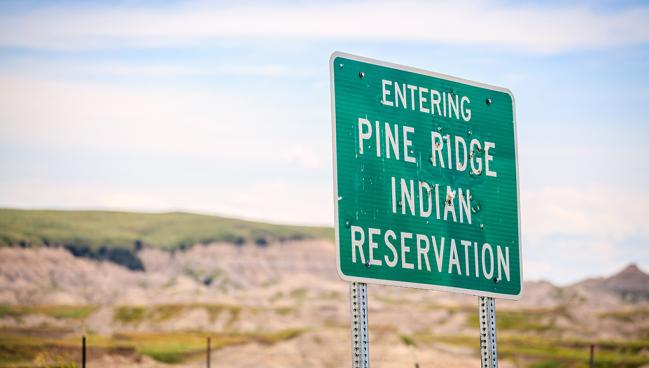Half of American Indian and Alaska Native Seniors Have CVD: Medicare Analysis
A “radical reckoning” is long overdue as efforts to improve health in this population have not been prioritized, authors say.

The burden of CV disease is high in American Indian and Alaska Native seniors, with approximately 50% having a diagnosis of CAD, heart failure, or atrial fibrillation (AF), a large analysis of Medicare beneficiaries shows.
“While we know that structural racism is pervasive in our healthcare system and cardiovascular disparities are in many cases worsening over time in the US, the cardiovascular health of the American Indian and Alaska Native population has been severely understudied and efforts to improve health in this population have not been prioritized,” said Lauren A. Eberly, MD, MPH (Gallup Indian Medical Center, NM and University of Pennsylvania, Philadelphia), the primary investigator of the study.
In the paper, published September 22, 2023, in JAMA Network Open, she and her colleagues say the findings highlight an urgent need for strategies aimed at advancing cardiovascular equity in this population.
“The incredible burden of cardiac disease and cardiac risk factors is striking, but it is really important to contextualize these findings,” Eberly said. “We have to acknowledge that settler colonialism, pervasive structural racism, broken treaty obligations, genocide, and exclusionary governmental policies are really at the heart of these findings, as they have concentrated poverty and fueled health inequities.”
American Indian and Alaska Native individuals have the lowest life expectancy of all racial groups in the United States and many live in poverty, as the study demonstrates, with nearly 40% of its participants falling into the most economically disadvantaged group on the Distressed Communities Index.
‘Persistently High’ Burden of Diseases
The study tracked health and outcomes in 220,598 American Indian and Alaska Native Medicare beneficiaries (median age 72.5 years; 57.8% female) from 2015 through 2019. The median household income of the cohort was $49,375 and nearly half lived in the Western United States. Diabetes was present in 45%, hyperlipidemia in 61%, hypertension in 72%, and chronic kidney disease in 39%.
We have to acknowledge that settler colonialism, pervasive structural racism, broken treaty obligations, genocide, and exclusionary governmental policies are really at the heart of these finding. Lauren A. Eberly
The prevalence of CAD was high in the population, decreasing slightly from 38.6% to 36.7% over the study period. Similarly, more than 20% had a HF diagnosis and a little over 9% had AF.
Per 1,000 person-years, CAD incidence increased from 37.2 in 2015 to 41.5 in 2017 and then decreased to 35.3 in 2019 (P < 0.001).
The incidence of HF increased by 4.08%, while acute MI increased by 4.79% and AF decreased by 2.43%. The incidence of stroke/transient ischemic attack also decreased by 5.08%.
The overall mortality rate was 19.8%, which declined slightly between 2015 and 2019. Deaths from CAD remained stable during the study period, while deaths from CVD, AF or flutter, cerebrovascular disease, and HF all decreased slightly.
Innovative, Culturally Centered Interventions Needed
According to the researchers, the high burden of CVD and cerebrovascular disease is consistent with data published two decades ago in the Strong Heart Study of American Indian and Alaska Native populations.
Comparing the current data with other fee-for-service Medicare populations reveals about a 10% higher overall prevalence of ischemic heart disease. For HF, prevalence rates in 2018 were estimated at 14.5% in all Medicare fee-for-service beneficiaries and 14% in white patients, as compared with the much higher prevalence in the American Indian and Alaska Native population, at 22%.
The investigators add that the rising incidence of HF in the study population “is alarming and is notably in clear contrast to prior evidence of a declining incidence of HF among all Medicare beneficiaries.”
Community-level solutions like prescription programs of healthy fruits and vegetables and policies like the Navajo Nation Healthy Diné Nation Act offer community-based ways to address food insecurity and increase access to nutritious foods, Eberly and colleagues say. The latter puts a 2% tax on unhealthy or minimal-to-no nutritional value foods and drinks, with the money that is generated going to Navajo communities for local wellness projects.
Other solutions, they say, should be initiated with genuine engagement of Indigenous communities, including strategies that integrate traditional cultural teaching and healing into Western medicine, as well as promotion of Indigenous knowledge and traditional cultural practices. Strategies like the Navajo Wellness Model have been shown to be effective in treating cardiometabolic risk factors such as obesity and diabetes and should be expanded on a broader scale, the researchers say.
“I think it’s important to say that we are long overdue for a radical reckoning to address the historical and ongoing harm within tribal communities,” Eberly told TCTMD. “Efforts to rectify a legacy of injustices are necessary to combat health inequities.”
L.A. McKeown is a Senior Medical Journalist for TCTMD, the Section Editor of CV Team Forum, and Senior Medical…
Read Full BioSources
Eberly LA, Shultz K, Merino M, et al. Cardiovascular disease burden and outcomes among American Indian and Alaska Native Medicare beneficiaries. JAMA Network Open. 2023;6(9):e2334923.
Disclosures
- Eberly reports no relevant conflicts of interest.





Comments